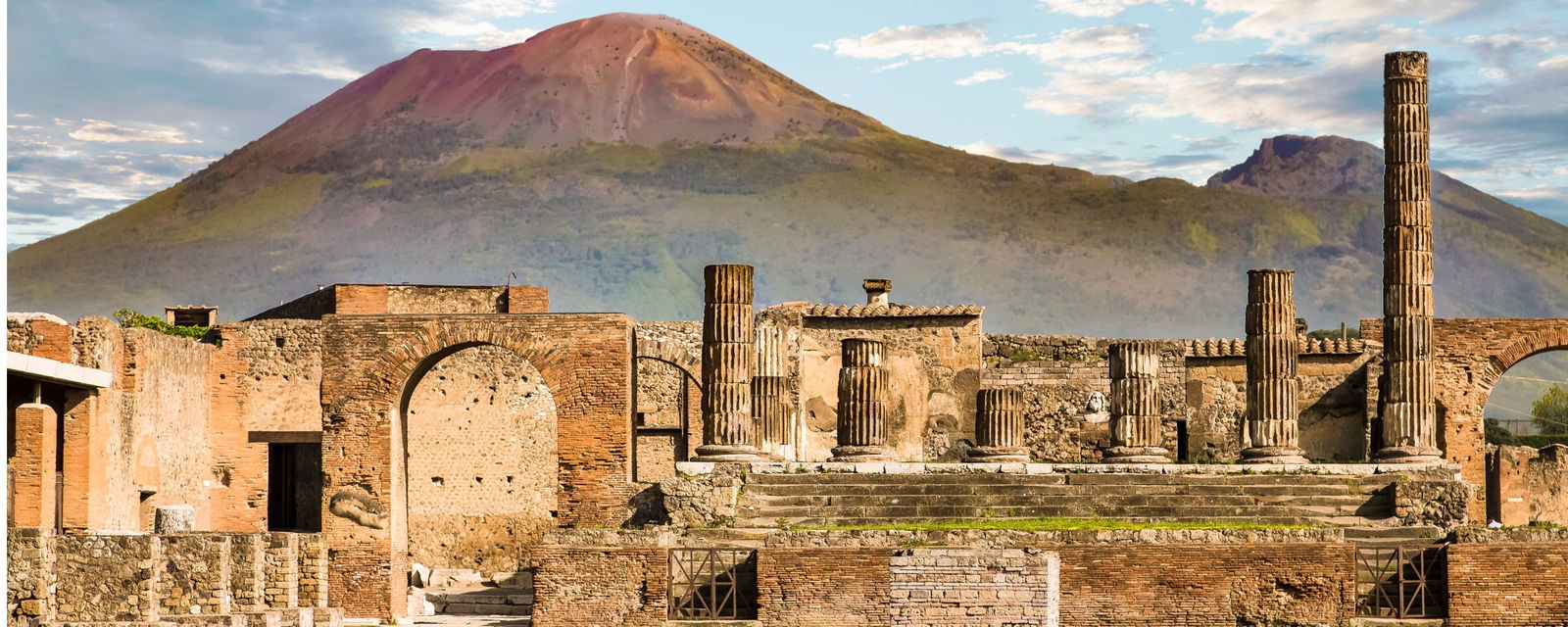


Pompeii, an ancient Roman city located near modern-day Naples, Italy, is an extraordinary archaeological site that offers a fascinating glimpse into the daily life and tragic history of the ancient world. Buried under volcanic ash and debris from the eruption of Mount Vesuvius in 79 AD, Pompeii was remarkably preserved, providing a unique time capsule of Roman civilization.
Visiting Pompeii is a captivating journey through ancient history and an opportunity to witness the resilience of human civilization. As you walk among the ruins, you'll gain a deeper appreciation for the achievements and vulnerabilities of the ancient world, and you'll be left with a lasting impression of this remarkable UNESCO World Heritage site.
Step back in time and immerse yourself in the rich history of ancient Rome. Explore the well-preserved ruins of Pompeii, including its streets, homes, public buildings, and markets. Wander through the Forum, the city's main square, where political, social, and religious activities took place. Discover the Baths of Pompeii, the House of the Faun, and the Amphitheatre, gaining insights into the daily lives of its inhabitants.
Pompeii is an archaeological marvel that offers a rare opportunity to witness an ancient city frozen in time. Marvel at the well-preserved frescoes, mosaics, and intricate architectural details that adorned the city's buildings. Admire the beautiful Villa of the Mysteries, known for its stunning frescoes depicting mysterious rituals. Explore the House of the Vettii, a luxurious residence showcasing intricate decorations and intricate interior designs.
As you walk through Pompeii's streets, you can almost feel the vibrancy of the city that once thrived there. Observe the ruts made by chariots on the stone-paved roads, explore the remnants of shops and taverns, and imagine the hustle and bustle of ancient street life. Visit the brothel, known as the Lupanar, and marvel at the explicit frescoes that adorned its walls.
Pompeii's proximity to Mount Vesuvius adds to its allure. Gaze upon the majestic volcano that caused the city's destruction, and consider the cataclysmic events that unfolded on that fateful day in 79 AD. Take the opportunity to visit Mount Vesuvius itself and hike to the crater to enjoy panoramic views of the surrounding landscape.
Pompeii offers a unique cultural and educational experience. Explore the archaeological site with a knowledgeable guide who can provide insights into the history, architecture, and daily life of Pompeii's inhabitants. Gain a deeper understanding of ancient Roman society, its art and architecture, and the impact of the catastrophic eruption on the city and its people.

Winter in Pompeii, from December to February, brings cooler temperatures, making it a pleasant time for exploring the ruins without the intense heat of summer. It's an ideal time to discover the well-preserved ancient structures, such as the Forum, amphitheater, and luxurious villas. However, it's essential to be prepared for occasional rain showers during this season.

Spring in Pompeii, from March to May, brings milder temperatures and blooming flora. It's an excellent time to visit the site, as the landscapes become greener and more vibrant. Spring allows visitors to admire the exquisite frescoes and artwork adorning the walls of ancient houses.

The summer season in Pompeii, from June to August, brings hot and sunny weather. While summer attracts larger crowds, it also offers longer opening hours, allowing visitors to explore the archaeological site at their own pace. Despite the crowds, summer is an exciting time to attend guided tours and learn about the city's rich history from knowledgeable guides.

Fall in Pompeii, from September to November, brings mild temperatures and fewer tourists compared to the peak summer season. It's an excellent time for photography enthusiasts, as the soft autumn light enhances the beauty of the ancient ruins. Fall also provides a more tranquil and immersive experience in the archaeological site.